It was a day like any other. The dog demanded a walk and food, and more of each. Coffee was worshipped.
Then I went to unload the dryer from last night’s washing. No sun for several days had led to a laundry crisis.
As I unloaded the dryer I came across two pairs of Lightfoot work socks as pictured.
Puzzling, but as this load of washing included the cleaning rags that Paola uses, I connected the socks to the rags and the rags to her. Elementary. Somehow her socks had got mixed up with the rags. Perhaps they fell out of a bag she brought, and she did not notice when scooping the lot up. Who knows.
Mystery solved, I made a mental note to return the socks to her and to ask how they came to be there.
Ah huh. I left the socks among the cleaning materials and thought nothing more about the matter until her next scheduled appearance. Dutifully, she appeared and then said, ‘What are these socks doing here!’
She disclaimed the socks in no uncertain terms. ‘Not mine.’ I explained how I had come across them. ‘Not mine.’ she reiterated. “It is a good brand,’ I said. ‘Not mine,’ she repeated, slowly so I would get it.
I now have two additional pairs of socks. Not the sort I would have chosen for myself, but sturdy and comfortable.
Is this the washing machine compensating me for all the odd socks lost in the wash these many years?
Author: Michael W Jackson
The Galton Case (1959) by Ross McDonald
This krimi could serve as an object lesson in a workshop on plotting a crime novel. Every word, every gesture, every line of dialogue, every character plays into the plot in the end.
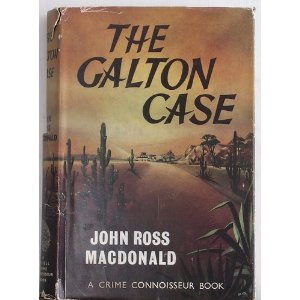
I grew restive at some of the to-ing and fro-ing and dialogue, only to realise later that it all added up. It is such jewell that Jacques Barzun can only say of it ‘One of the best Lew Archer stories.’ Yes it is and that is saying a lot.
It combines the ingredients to be found in most of his krimis. A wayward child of privilege, an emotional void, a lonely woman who clutches at a phantom, an unbalanced beauty, a too-good to be true husband, an impulsive doctor, along with some lowlifes from Lost Wages and some small town cops trying to do right with meagre resources.
Is the beautiful wife really unbalanced? Does the other lonely woman sense something beyond the paperwork? Is the husband long-suffering or something else? Read the book to find out.
There are also some scenes in Mcdonald’s native Canada, in Ontario, as Archer digs deep into the past of the missing man and the found boy. (It makes sense in the story.)
The problem with reading about Archer is that it sets an impossible standard for any other writers. Not only are the plots perfect, but the prose is crystalline.
Albeit there were some false notes, as when Archer plays the smart-aleck with the local plod on first-meeting. It is out of character for the Lew Archer I have known all these years, and it seems contrived. Was McDonald experimenting?
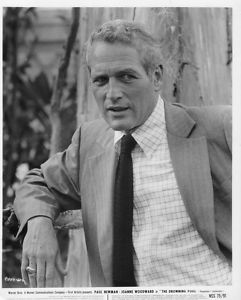
Pretty Boy Paul Newman played Archer in two films, but as per Hollywood logic the name was changed to Lew Harper to follow Newman’s ‘H’ movies, Hud and Hombre. Thus ensuring few Mcdonald readers saw it. First invest money in buying the property and then dilute it. No doubt the executive who did that gave himself a big bonus. Genius.
The Newman films were about ten years apart: ‘The Moving Target’ and ‘The Drowning Pool.’ Each is fine with some superb performances from the whole cast.
American Gods (2001) by Neil Gaiman
An innovative novel that has mystery in it. An oddball nicknamed Shadow is released from prison and bumps into a strange man who offers him a job as a gofer; with no other prospects Shadow agrees, and slowly finds the man even odder than he first thought.
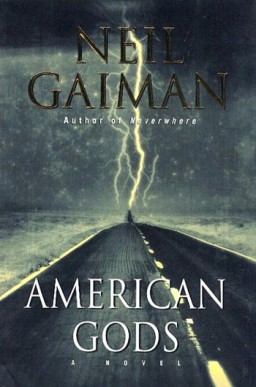
The genre is mixed, combing fantasy, krimi, satire, mystery, and horror, to paraphrase one of the many laudatory reviews. Others describe it as masterpiece of innovative fiction. Ho hum. It seems to have been written for jaded reviewers and awards panel members, not for readers in search of diversion, enlightenment, engagement, and pleasure. It is indeed very well written and the author is a story teller at heart. that much is clear.
To this reader it suffers from the complaint of much self-consciously modern, genre-bending literature in that it tries too hard to be different. We have multiple perspectives, most of which are unreliable, combined with non sequitur narrative lines that fizzle out, intercut with stories from times past with no discernible connection to the foreground story of Shadow.
Spoiler alert. The thesis is that the gods are among us, and that is cleverly done. There is rough division between the old gods and the new gods. The old ones are two kinds: native, e.g., Indian, and immigrant. The waves of immigrants to North America in the 18th, 19th, and 20th Centuries brought their gods with them in their minds and hearts – which vivify the gods. But life and times changed for the Indians and for immigrants and the Old Gods have worn down, no longer worshipped, no longer the object of sacrifice, no longer venerated, or embodied in effigies as tokens, no longer…. Without worship and offerings, the powers of the Old Gods diminish. Now these gods are reduced to driving taxi cabs (for generations) in one case), repairing refrigerators, living in self-imposed exile isolated in the north woods for near eternity. Yet most of them still hold on and out. Though some want to make the best of their reduced circumstances and have no wish to reclaim their former powers, others cannot endure a forever of cab driving or repairing refrigerators and propose a war with the new gods. Clever that.
Rising are the new gods, and this is the satire. They are media, represented by the Barbie Doll who reads the weather on every local television channel in the world. This one struck a chord of recognition in me. Another new god to be placated is television and the scenes involving ‘I Love Lucy’ gave me a cackle. If only!
The New Gods are moving decisively to eradicate the Old Gods, who have squabbled among themselves for centuries, and now find it hard to put aside these old enmities to pull together in defence. Shadow is drawn into this no (hu)man’s land between these two forces, and his gradual realisation of it, reaction to it, and acceptance of it, are very well handled. All in all, this clash of the gods makes as much sense as reality does, and this is before Trump Donald became president.
The end of the final negotiations between the old gods and the upstart new gods occur in a place I know well: the geographic centre of the continental forty-eight states. And where is that class?
Lebanon, Kansas.
It is very well described in these pages on a wintery night, long after the tourist season has finished, in a dilapidated motel nearby with swirling wind coming off the Great Plans carrying the scent of petrichor combined with the portent of much worse to come. It is brooding, and though vast, somehow confined. The author really makes it seem more like a gothic haunted house rather than the wide open and flat space of northern Kansas.
Reader, ‘petrichor?’ Look it up (in a big dictionary).
I know Lebanon KS from several visits and because it loomed large in my adolescent cosmology because it is only a few miles dues south of Hastings near the Platte.
The Old Gods are Norse, and mythological like an embodiment of Easter (but not Santa Claus).
The mix is too rich. Many story lines are started and few are finished. I grew weary of thumbing pages on the Kindle when the digressions set it. No doubt my loss but I like following a path, not stumbling through the underbrush in a zig-zags. This sort of reading reminds of defences against U-Boats, treating the reader as an adversary to be fooled, tricked, and deluded: Modernism is thy name.
In my reading, albeit incomplete and superficial, there is no divinity from the great religions, like Jesus, Allah, Buddha, or such. And no reference to Shinto.
There are however long sections on coin tricks, which Shadow learnt in prison to pass the time. Perhaps the emphasis on this skill is explained somewhere later but my Kindle flipping speed passed it by.
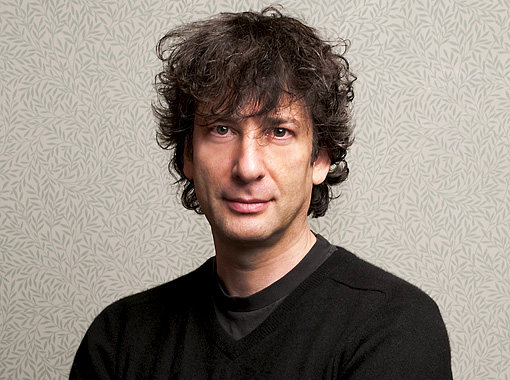 Neil Gaiman
Neil Gaiman
Talking to a friend a few weeks ago, he said he had read and liked it. It seemed an odd choice for him and later when thinking about starting another book, I turned on the Kindle and decided to try it as a change of pace. Not to my taste.
Committees and how to immobilise them
The behaviours recommended below struck me as standard operating procedure on every university committee i have endured. Having experienced everything on the list, little did I know each instance was part of a whole strategy to undermine the joint. Little did I know. Ain’t it the truth!
These excepts come from an Office of Strategic Services (OSS) manual distributed during World War II to Allied sympathisers in Nazi occupied Europe. It shows these friends how to gum up the works while remaining safe. For those born without a history gland, the OSS was the immediate predecessor of the CIA.
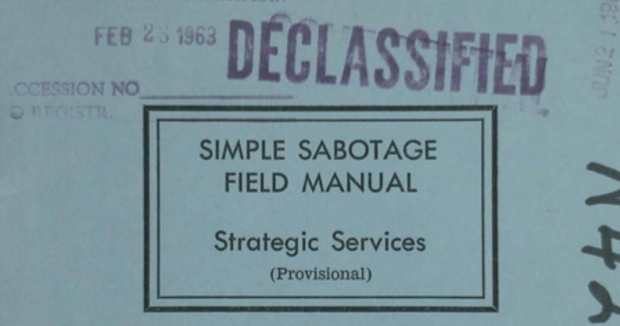
If there is popular demand I will post the next part which concerns how managers can destroy the place while remaining lily-white. It, too, reminded me of some with whom I have worked.
On committees:
(1) Insist on doing everything through channels. Never agree to a short-cut to expedite action.
(2) Make speeches. Talk as frequently as possible and at great length. Illustrate your points.. by long anecdotes and accounts of personal experiences. Invoke the need for standards often.
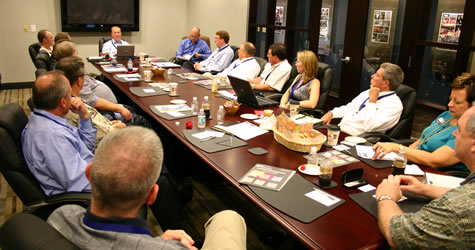
(3) When possible, refer all matters for further study and consideration.
(4) Make all committees as large as possible so that they are representative, and to insure there is never agreement.
(5) Haggle over precise wordings of communications, minutes, and resolutions.
(6) Refer back to matters decided upon at the last meeting and attempt to re-open previous decisions and actions.
(7) Urge fellow-conferees to be “reasonable” and avoid haste which might result in embarrassments or difficulties later.
(8) Raise the propriety of any decision because it might lie within the jurisdiction of another element.
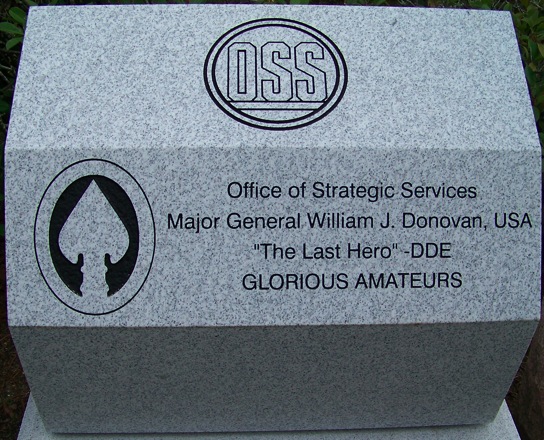
The genius of OSS was William Donovan, known as Wild Bill. Thus reminded of this protean figure, I think will find a biography of him.
‘Vita Brevis’ (2016) by Ruth Downie
The further adventures of Ruso, medical officer late of the 20th Legion, and his British wife Tilla, and their adopted daughter Mara.
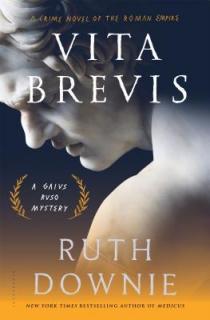
A turn of fortune brought them to the capital of the world, Rome. Tilla resisted leaving Britannia, but needs must and off they went.
She found Rome even more awful than she expected and her expectations were very bad. For his part, once there, Ruso cannot quite remember why it seemed a good idea to go to Rome. Tilla heroically resists saying ‘I told you so’ for as long as she can. Not long that.

The disorder, noise, smells, expense, rudeness, violence, are just some of the vita Romana. Little has changed since then, to be sure.
The patron who sponsored their migration, luring Ruso away from his army sinecure, where he had long since worn out his welcome, is likewise not sure now that it was a good idea. There seems to be nothing for Ruso to do, and Rome is full of doctors, snake-oil salesmen and, for that matter, saleswomen, faith healers.
However when Doctor Kleitos is called away to the country, Ruso is nominated by his patron as the locum. Excellent, thinks Ruso, because the quarters will get them out of the overpriced hovel they are renting and the surgery will generate some sesterices.
Odd though that Kleitos seems to have taken everything not bolted down, tables, chairs, crockery, and all his medical records for a temporary leave. Even odder that a dead body is delivered to the front door in barrel.
Thus does the plot thicken.
Ruso is so wonderfully vague and easily distracted, so painfully well meaning and imperceptive, technically adept at medicine and foolishly brave that he charms the reader. TIlla is so determined, impetuous, and resourceful it makes the reader wonder how the Romans ever conquered her tribe.
She sings Mara to sleep with British songs of triumph, while Ruso worries about the dosh he does not have, and puzzles over the fool’s errands his patron dishes up. What is going on? Then there is that dead body….. It has nothing to do with them but it has put a curse on the medical practice, compromised the patron, and generally gummed up the works. Like it or not, they are going to have to figure it out.
Apart from the historical setting the most amusing elements in these novels is the by-play between Ruso and Tilla, man and wife. At one point, amid the confusion, she agrees with him, calls him wise, and meekly defers to him on some point. He puffs up and as he leaves, he starts wondering if she is ill. What else could explain this submission.
Ruso has his own moments. When an accident causes injuries on a building site there is the competent legion doctor performing triage, applying tourniquets, snapping dislocated bones back into place while the dust is still flying. When quiet returns so does the self-doubt, regret, and weakness that dog his steps.
Tilla may be small and foreign, but she has learned to survive, as some heavies come to extort money discover to their regret. As she seems to drop to her knees to beg mercy, she is achieves the angle of attack!
 Ruth Downie
Ruth Downie
This is the latest in a long running series. The learning is worn lightly but there is a mountain of historical research in each book that is made intelligible to the reader. It must difficult to maintain the momentum and to reiterate the freshness and vitality of the two principals each time, but so far, so excellent.
The author starts with a blank screen and the silent expectations of readers. The days and months pass and finally there is a plot, a story, and a manuscript. Then the real work begins of whacking it into a novel.
After all that work, one reviewer on Good Reads has this to say:
‘A non-offensive and not super engaging story about the Medicus and his family in Rome. It was a fine time passing book, but not one I would recommend.’
I would give that remark one star (*) and say it is lazy, inept, and self-indulgent. To sum it up in English: ‘An inoffensive story that did not engage my attention but I did read it.’ This reader’s recommendation is something I can live without.
Finland, Mannerheim, structure, and agency
Structure and agency, that famous double play combination for Team Social Science, came to mind reading about that extraordinary individual, Gustav Mannerheim.

The social sciences as a whole and each separate social science, like my very own political science, rests on the verity of structure über alles. Structure is both all around us and sometimes difficult to detect at the same time.
The challenge is to reveal structure hidden by the drifting sands of time and circumstance. To see structure in the myriad of details of social life requires detail and imagination, like seeing a constellation in a sea of stars, but it can be, it is, done. Every social scientist has sworn that faith at least since Emile Durkheim’s monumental book ‘Suicide’ (1897). For those who skipped Sociological Theory, in that study Durkheim demonstrated beyond doubt that most private and final act of suicide traces back to social structure. The argument and evidence still dazzle a reader.
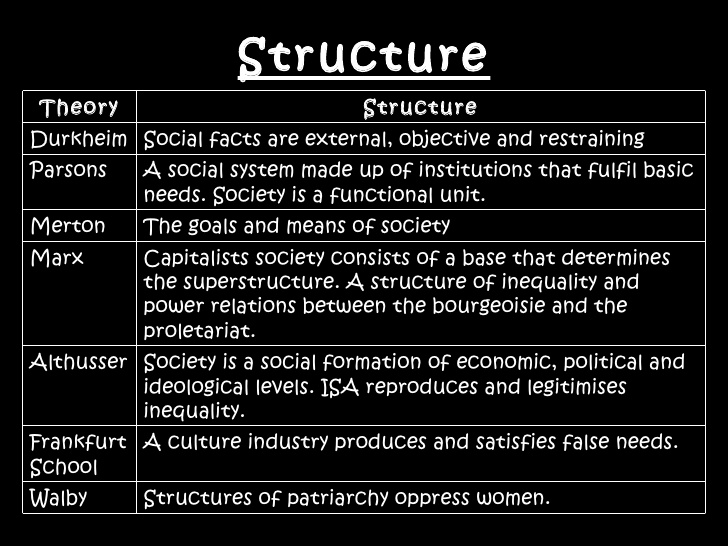
Yet it is also surely the case that most social scientists think of themselves as agents. The preacher is always beyond the testament. That is the chink in the intellectual armour. Karl Mannheim made that auto-exceptionalism explicit when he spoke of free-floating intellectuals clustered in cities who are in but not of the milieu around them. Vanity thy name is called once again. Many convoluted books have appeared trying to unite the two from Jurgen Habermas’s impenetrable tomes to Anthony Giddens unreadable tracts. Each sets out to make the obvious simple and instead makes it unintelligible. Biography is cold, crisp air by contrast to the stale, hot air found in those pages.
Per structure, if the individuals who made the first steps in developing photography had not done so, others would have made those or other developments that would lead approximately to the same technical advances. That is easy to believe in the middle of technological developments where many hands are at work trying many things as was the case with photography. Or, say, the discovery of DNA when many scientists around the world were closing in on it in a race of sorts. It is less easy to believe in the history nations.
Yet according to structure had Gustav Mannerheim been killed in 1916 on the Polish front while fighting the Germans in World War I where he was a general in the Tsar’s Russian army, some how another(s) would have filled his shoes, or some very like them, and the story of Finland would have played out pretty much the same. If Winston Churchill had been killed crossing the street in New York City in 1929…. If Adolf Hitler had died of typhus as an infant….
Ergo, no single individual, no agent, is decisive. Structure makes us but we do not — individually — make structure. Collectively, yes we do make structure as much as it makes us but not individually.
Structure is not quite determinism but the transposition offers the easiest exposition.
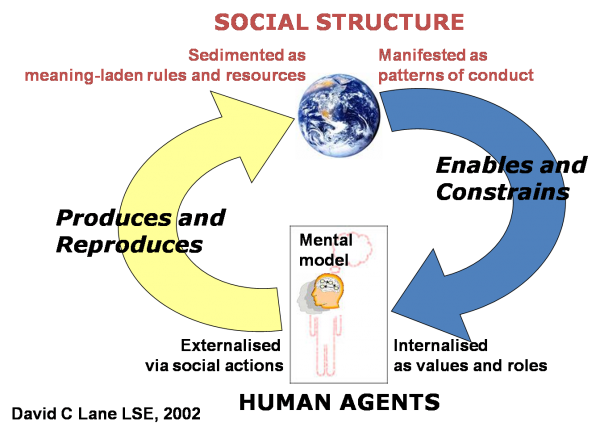
Even allowing for the biographer’s preoccupation with the subject, it is hard to believe that there was anyone else could have done what Mannerheim did in 1918-1919 and again in 1940-1944. Certainly that is what both his allies, friends, associates, onlookers, and enemies thought. He was as singular in the history of his country as Napoleon in France, Stalin in Russia, Churchill in England, or Hitler in Germany.
Without Mannerheim the history of Finland would surely have been different. Though I am sure revision pygmies have made careers out of cutting him down to their size, in fact, he will endure and they will not.
Star Trek: Beyond (2016)
This is Year Fifty. It all began in September 1966 and I was there to see it on that night in September. All Trekkies will have to see this, whether they like it or not.

What’s to like?
The cast members are superb simulacra of the Originals. That is partly looks, assisted by make-up, but also mien, accent, and attitude. The actor’s craft is to inhabit another person and they do it with ease. Bones is perfect and so is Kirk. Spock is more nebbish than the Original. Uhura is more wonder woman, and Scottie is more excitable, but these are quibbles.
The distribution of lines and incidents to the ensemble cast of the crew. Scottie, Sulu, Uhura, Spock, Bones, all have more than one moment in the camera’s sun. Only Chekov misses out, in my memory. It is not all about Kirk, as too many episodes of the Original were.

There are some zingers to be sure. Throw aways lines like ‘they say it hurts less if it is a surprise.’
The women hold their own. Uhura may answer the phone once or twice but she also delivers some surprises.
Jaylah’s literal-mindedness was amusing. Though good to have on side in a fight, Jaylah seems to be there mostly for the make-up.
The idea of heavy metal music can be used as it is in the movie was marvellous. I am trying to steer clear of a spoiler here.
The explicit tribute to the Originals in the last scene with Spock was humble.
What’s to not like?
The repetitive shoot ‘em ups are incomprehensible and pointless and there are many of them, at full volume.
The holes in the plot are sufficient to pass Africa through. The villain’s backstory is vacuous. The Franklin is … What’s the word, it is impossible to suspend disbelief.
The Federation’s own responsibility for its problems is a worn out motif in Star Trek but here it is again.
The variation are the returned veteran was the theme in the predecessor (‘Into the Darkness’) but here it is again in a slight re-configuration. These writers need to read more to find inspiration, say Jane Austen or Anthony Trollope to broaden the horizons and deepen the insight.
The theme about unity and strength is said a couple of times but left empty. Recalling as I do all those conversation with thesis writers where I would say integrate, e.g., Michels’s Iron Law, and the writer would say ‘But it is on page 46’ and indeed it was mentioned there but it was not developed and integrated into the text. Neither is the unity-strength couplet here. It is a case of ‘words without the music.’
The army of CGIs dispatched in the action scenes bring the franchise closer to the comic book status of Start Wars.
Kalara, the bait, with that strange head more or less disappeared from the story.
Summing up.
At two hours and two minutes it is about thirty-two minutes too long. The interest and intelligence of the story do not sustain the duration. It is out of balance.
The effort put into those CGIs and choreography of the action scenes might better have gone into the script.
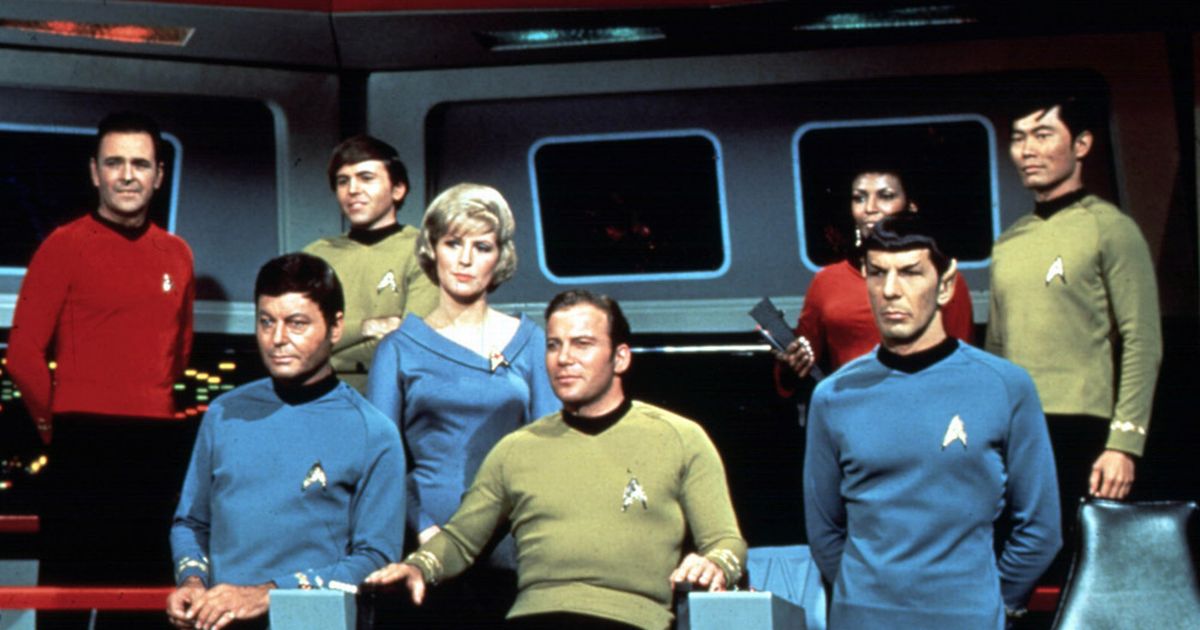
What made ‘Star Trek’ a keeper in 1966 was that it was not just another shoot ‘em up on television where there were plenty others of that ilk. There were genuinely intellectual puzzles, like ‘Court Martial’ and morally challenging episodes, like ‘The Devil in the Dark’ and ‘The City of the Edge of Forever.’ In its current embodiment most problems are solved with a fist and a phaser. Such a contrast to the Original, e.g., ‘Nomad, ‘Return of the Archons,’ or ‘The Doomsday Machine’ where some thinking had to be done.
The Original was made for adults and ‘Star Trek: The Next Generation’ brought that to fruition. The present version is regressing to an audience of prepubescent boys which is probably inevitable since that likely describes the filmmakers from writers, directors, and producers.
‘Needle in a Time Stack’ (1966) by Robert Silverberg
This title is a collection of science fiction short stories by one of the well-known names in the genre at its peak. In 1966, fifty years ago, a gallon of regular gasoline in the USA was 0.31 cents. Cars had tail fins. Japan was where the junk came from. Vietnam was seldom in the news. The Cold War was very cold. China was …. nearly invisible. Hollywood ruled the silver screen. Air travel was the preserve of the very rich.

Robert Silverberg’s (1935 -) stories feature automatic doors, mobile phones, automatic autos (self-driving cars), surgery that does not cut the skin, video watches, as well as the a menageries of aliens. But mostly the stories are how people think, act, and react. The gadgets are there as props and furniture, as are the aliens.
Best of all, given that in 1966 ‘I Love Lucy’ was the top-rated television show, was his anticipation of reality television with its fetish for the pain and humiliation of others. Equally amusing was the tyrannical robot diet enforcer in ‘The Iron Chancellor.’ Yes, the allusion is to Otto von Bismarck who is here combined with a diabolical Jenny Craig.
The most thought-provoking was ‘The Invisible Man,’ a rift, of course, on the H. G. Wells story but with some social and psychological insight which Wells never had.
The stories are all about 15-20 printed pages. Irony features heavily in them. Think if Rod Serling’s ‘The Twilight Zone.’
A character, usually the narrative voice, is confounded at his own game. The con man is conned. The exploitive television producer is exploited. The lord is abased before a serf. The expert on alien life forms is disgusted to meet one. The firm bureaucrat is dealt with firmly by another. There are quite a few role-reversals.
Most of us like to see the mighty eat some crow. The more so when the mighty are unworthy.
As adventuresome and imaginative as these stories are, a contemporary reader they swim in the manners and morēs of 1966. There is nothing about racism. Not even the stories involving alien beings seem to reflect on race relations.
Alike absent are women. Occasionally there is a secretary in an outer office, or budding young girls who long to be married, or a frazzled housewife, but none is an agent, an actor, These are men’s worlds. The linguist has a wife but her role is to pack his bag when he goes to meet the aliens. The doppelgänger meets several young women whose only aspiration is marriage. The dieting husband has a wife who also needs to diet, but she is but a chorus to his tenor.
Sometimes the balance of the stories fails. There is a considerable lead up to wispy, poof denouement.
The prose is fluent and confident. I re-read a couple of Philip K. Dick novels a few years ago and remember finding it hard going. Not so with these pages.
Most collections of short stories take the title from one of the stories, usually the longest or the one placed first. That is not the case here. The title stands apart.
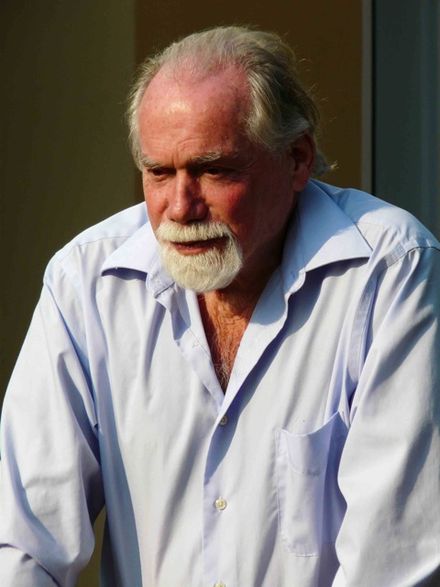 Robert Silverberg
Robert Silverberg
This copy emerged from a box in our recent move. Kathlyn McNeil bought it for 0.80 cents Australian in 1966. In those days the back cover had prices of Australia, New Zealand, United Kingdom, South Africa, and East Africa. Its pages have yellowed but the paperback spine remains bound.
When the deportations begin….
When a President Trump Donald begins deporting those he deems undesirable, will it go so far at to disinter the dead? If so, the program best begin at Arlington National Cemetery because there will be found the graves for a great many Mexicans and Muslims who died in the service of the United States, most of the recent ones in conflicts ordered by Republican presidents.

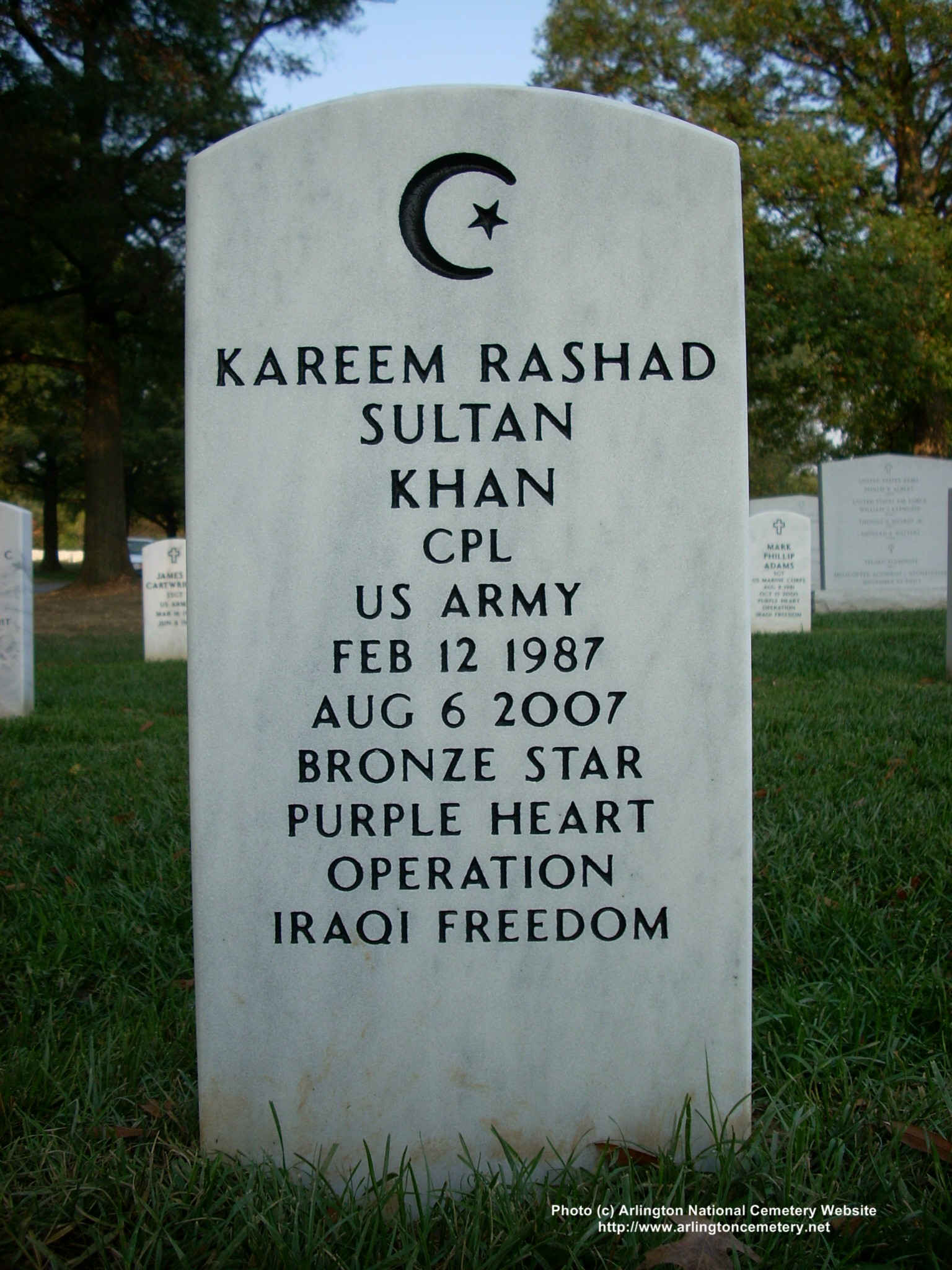

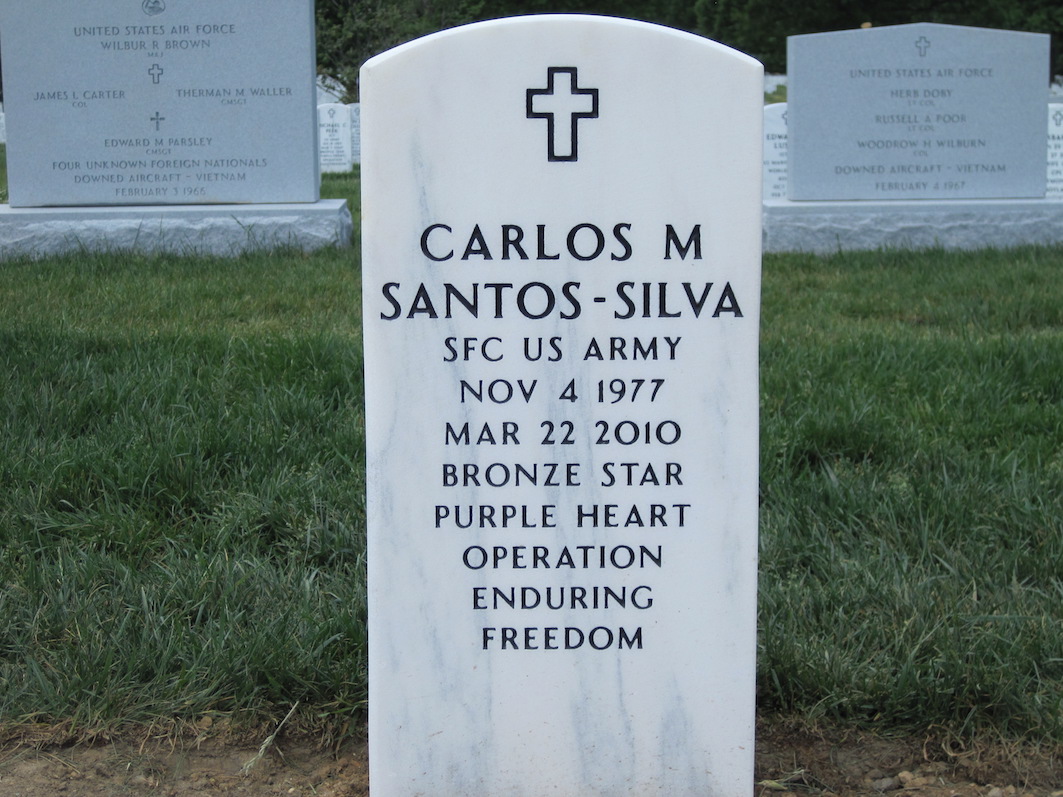
There are many more but let these examples suffice.
Least one think such a program is beyond the pale, note that it was done in Hitler’s Germany, Dead Jews in war cemeteries were disinterred and dumped elsewhere. Everything old can be new again. Though one hopes bellbottom trousers are not included.
My brief foray into the free-fire zone of Hillary Clinton elicited fevered responses from the righteous. So be it. But ensuing heat mirage may have blurred the concluding remarks about the dead. Ergo, at the risk of boring dedicated Bleaders, I reiterate those remarks above.
What’s it all about Hillary?
I was asked the other day, ‘A lot of people dislike Hillary Clinton. Why is that?’
My answer was simple. Her sin is that she is a woman.
A sin that has been compounded by her relentless ambition, since she was a junior employed by the Watergate Committee that pursued Richard Nixon to retirement. But such facts are not relevant.
The hatred that has been sown and nurtured by the Fox News and its allied ‘paths’ (a term that includes both sociopaths and psychopaths) for these many years has grown out of little more than hardened air.
The night she was elected to the Senate some years ago, by chance I was checking into a hotel in New York City, and when the count came on the television screen in the lobby, everything stopped. In the silence the announcer said Hillary Clinton had been elected and the lobby erupted in cheers from hotel staff and guests. It was completely spontaneous and general. I was surprised but she certainly had dedicated supporters that night.
She does not have to do anything to attract the vitriol and innuendo. Being is enough to provoke the haters.
That she is thick-skinned and keeps coming back for more, merely makes the haters sharpen the invective the more. Hypocrisy knows no bounds. Ask John Dennis “Denny” Hastert.
She has also learned how the system works and she has focused on making it work for her. Another of her crimes.
If it needs to be said for the back row, ambition, a thick-skin, and focus in a man are a virtue, but in a woman….
Grotesque but true, and nothing now will make it go away. Parking tickets, speeches to Girl Scouts, email at Christmas, shopping lists, everything has been ransacked for something and when nothing is found that is taken to be proof of deceit.
Barry Obama’s sin is greater. He is black. That is the ember that burns throughout the haters to which Trump Donald is now giving voice and license. All the smoke has created the fire.
The final sin that unites Hillary Clinton and Barack Obama is that they are Democrats. Black, woman, and Democrat are the three horses of the apocalypse for Fox News, Murdoch Organs, and Haters United, i.e., the Republican Party.
To mention that Republican nominee, I wondered if the deportations bruited of Muslims (Arabs) and Mexicans will include all them who have been killed or maimed in Vietnam, Somalia, Iran, Korea, Laos, Cambodia, Iraq, and Afghanistan. Will the next Republican administration dig up dead bodies, starting at Arlington, and deport them, along with the cripples and deformed who wore the uniform. Let it be noted that many of these dead were killed at the command of Republican administrations.

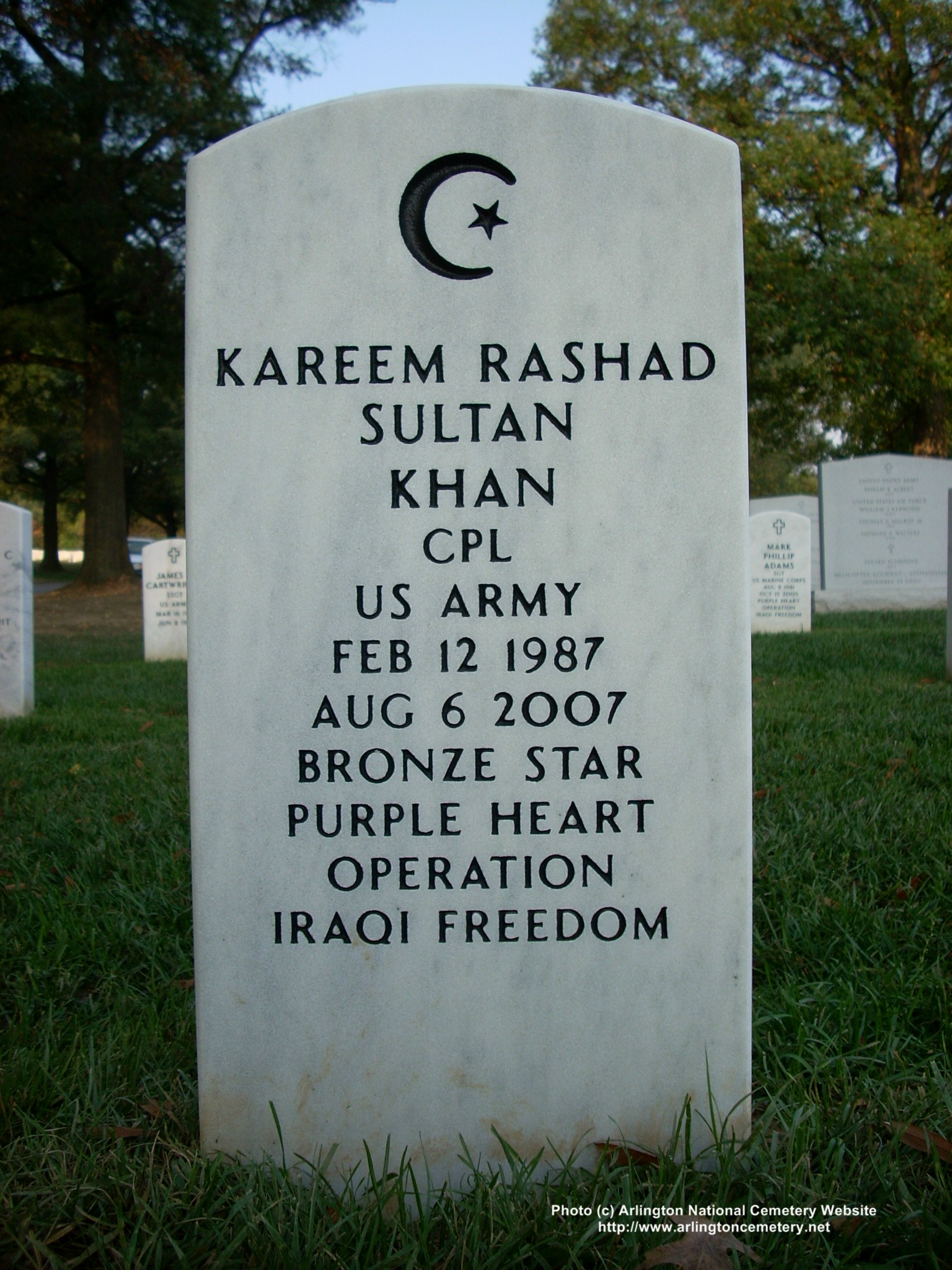
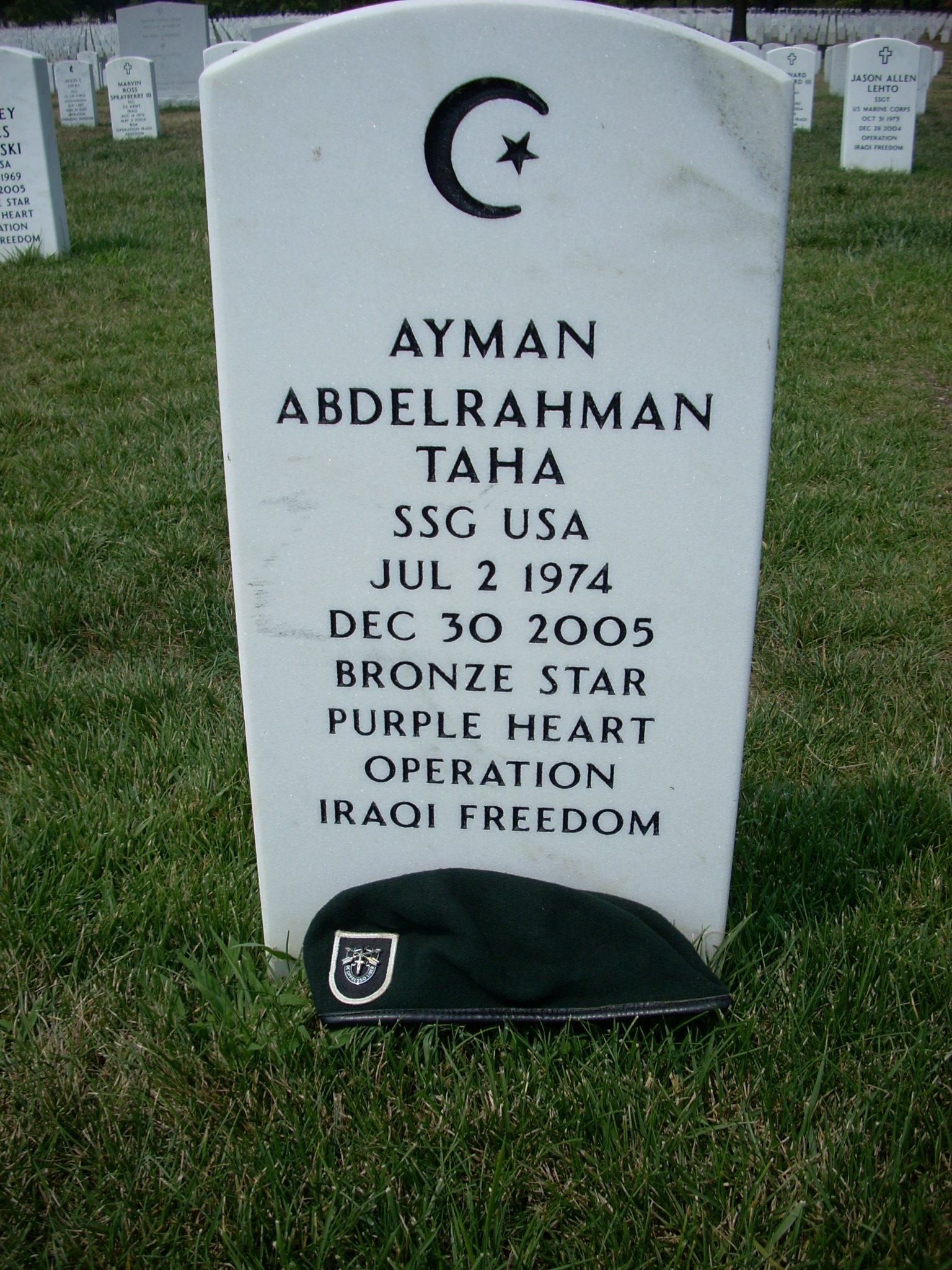
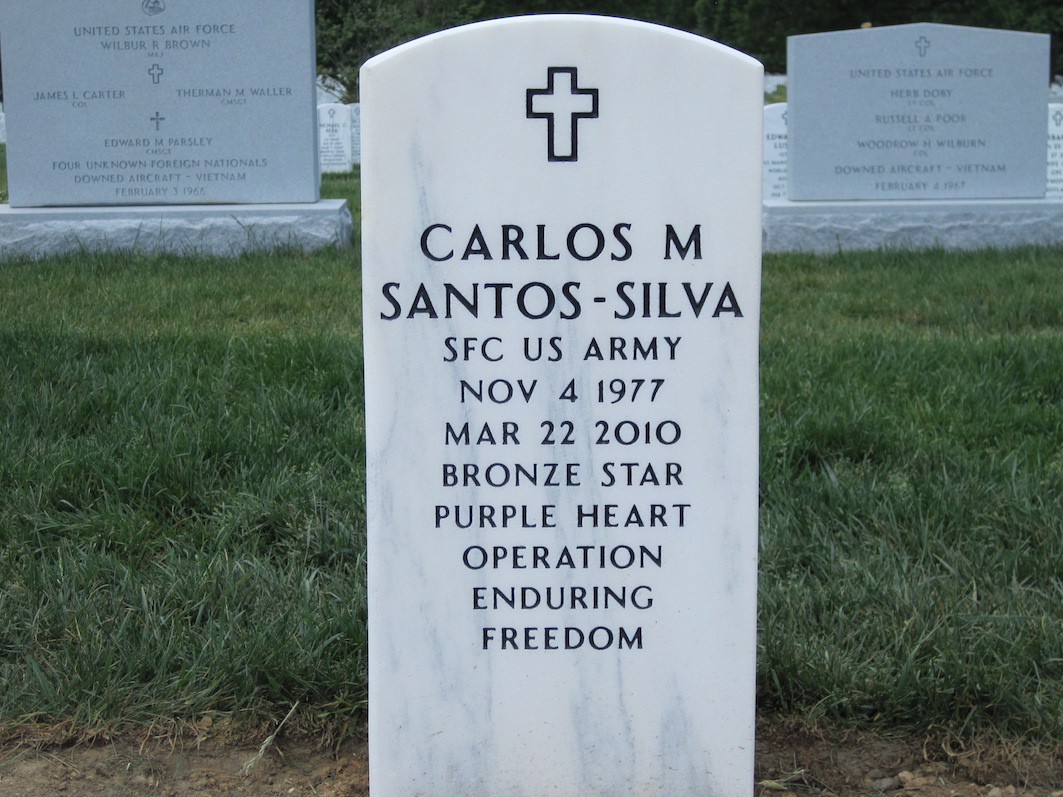
It was amusing the other day to read Republican sage William Kristol bemoaning the rise of Trump Donald, since Kristol was one of the laboratory assistants to his father that converted the Republican Party into the Frankenstein it has become. Having sown, this Igor now reaps.
Even more amusing was Kristol’s generalisation that historically Republican candidates for president have been superior to Democratic ones. Such is the view from Olympus, where dwells he amid the mirrors, they being his main source of information. No criterion are stated, and facts are absent.
Does this crew of candidates make one swell with pride? Warren G. Harding, U.S. Grant, Alf Landon, Chester A. Arthur, James Blaine, Barry Goldwater, and William Howard Taft.
No doubt some of these individuals were decent men, e.g., Grant, but he was a lousy president.
